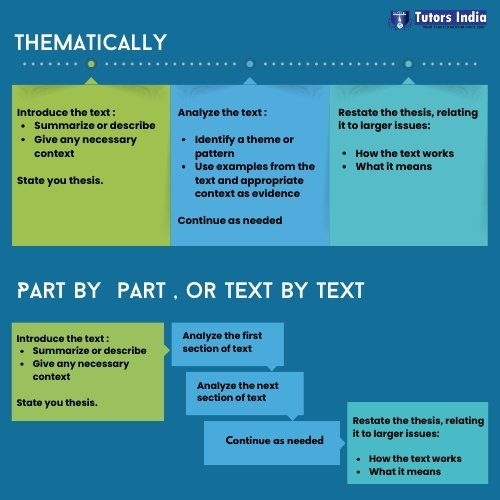Tips for Writing a Poetry Analysis Essay: A Master’s Guide
Introduction:
Poetry, with its vivid imagery and rhythmic language, can engage readers and elicit a wide range of emotions. Writing a poetry analysis essay allows readers to explore deeper into the layers of meaning embedded in each stanza. It provides an opportunity to decipher the poet’s intentions, investigate the complexities of language, and appreciate the craftsmanship behind each carefully selected word. In this course, we will go over noteworthy ideas for writing a fascinating poetry analysis essay that not only solves the verses but also effectively communicates your viewpoint.

Understand the Basics:
Before studying poetry, it’s important to understand its fundamental principles. Acquaint yourself with poetic devices, including metaphor, simile, alliteration, and symbolism. Pay attention to the poem’s structure, rhyme system, and meter, as these elements contribute to its overall impact. [1]
- Check out our study guide to know more on how to write an essay.
Read Multiple Times:
A cursory reading may scrape the surface of a poem’s significance. To fully comprehend and analyze the poetry, read it several times. Each reading may reveal previously unnoticed understandings and tones. Take notes on your initial reactions and track how they change with future readings.
Context Matters:
Consider the historical, cultural, and biographical context within which the poem was composed. Understanding the conditions that impacted the poet might shed light on their motivations and the poem’s intended meaning. Analyzing the backdrop might improve your understanding and the general quality of your essay.
Identify the Speaker and Audience:
Determine the speaker of the poem and the target audience. The speaker’s perspective influences the tone and meaning of a poem, whether it is that of the poet or a fictional character. Understanding the intended audience can shed light on the intent of the words.
Analyze the Title:
The title of a poem is frequently a clue to determining its meaning. Analyze the title before moving on to the poem’s substance. Consider how it relates to the substance and ideas and whether it reveals anything about the poet’s goals.
- To know more about how writing an essay is done in various fields, check out our Essay Samples.
Theme Exploration:
Identify and explore the central themes of the poem. What overarching ideas or emotions does the poet aim to convey? Themes may be explicit or implicit, and recognizing them is important for constructing a coherent analysis.

This is an example of Theme exploration taken from an analysis of Emily Dickinson’s poem’ “Hope” Is the Thing with Feathers.’ Check out Tutors India’s complete work on the analysis.
Imagery and Figurative Language:
Poets employ strong imagery and metaphorical language to elicit emotions and create sensory experiences for the reader. Identify and evaluate the usage of metaphors, similes, and other literary devices. Examine how these aspects affect the poem’s overall impact.
![]()
This is an example of imagery and figurative language taken from an analysis of Emily Dickinson’s poem’ “Hope” Is the Thing with Feathers.’ Check out Tutors India’s complete work on the analysis.
Meter and Rhyme Scheme:
Pay attention to the poem’s meter and rhyme pattern. The rhythm of the verses and the pattern of rhyming words might affect the reader’s experience. Consider whether the poem follows a set form or deviates and assess the impact of these decisions.
Structure and Form:
Consider the poem’s general structure. Is it organized into stanzas, and if so, how do they affect the flow of the poem? Investigate the usage of line breaks and punctuation, as these features might affect the reader’s pace and perception.
Evaluate Tone and Mood:
The tone and mood of a poem set the emotional atmosphere. Is the tone formal or informal? Is the mood somber or jubilant? Understanding these aspects contributes to a complete analysis of the poet’s message.
Connective Tissue: Transitions and Cohesion:
As you craft your essay, ensure smooth transitions between ideas. Your analysis should flow seamlessly from one point to the next. Use clear and concise language to articulate your thoughts and maintain cohesion throughout the essay.
Quotes and Examples:
Support your analysis with direct quotes and examples from the poem. These serve as evidence for your interpretations and help illustrate your points. Be selective in choosing quotes that best illustrate the themes or devices you are discussing.
![]()
This is an example of Quotes and Examples taken from an analysis of Emily Dickinson’s poem’ “Hope” Is the Thing with Feathers.’ Check out Tutors India’s complete work on the analysis.
Critical Interpretation:
Feel free to explore multiple interpretations of the poem. Poetry is often subjective, and different readers may derive various meanings from the same verses. Offer your perspective but acknowledge alternative viewpoints, fostering a more well-rounded analysis. [2].
Revision and Proofreading:
Once you have completed your initial draft, take the time to revise and refine your essay. Check for clarity, coherence, and consistency. Proofread for grammatical errors and ensure that your ideas are expressed with precision.
- To know more about how to write a Poetry Analysis Essay , check out our Samples.
Seek Feedback:
Consider sharing your essay with peers, teachers, or writing groups. Constructive feedback can provide valuable insights and help you refine your analysis. Be open to suggestions and use them to enhance the overall quality of your essay.
Conclusion:
Finding the meaning buried in a poet’s work can be accomplished through the enjoyable process of writing a poetry analysis essay. You can produce an analytical piece that is well-thought-out and perceptive by grasping the fundamentals, exploring the subtleties of language, and taking the larger context into account. Keep in mind that every poem is a distinct piece of art, and your essay should convey your admiration for the nuance and beauty of the poetry. Accept the challenge, follow your gut, and allow the poet’s words to direct you as you explore the lyrical landscape.
Tutors India offers best Essay writing service for students with standard quality. Take a look at the sample Essays, which cover a variety of topics & subjects of your need.
References:
- Biggam, J. (2018). EBOOK: Succeeding with your master’s Dissertation: A Step-by-Step Handbook: Step-by-step Handbook. McGraw-Hill Education (UK).
- Bean, J. C., & Melzer, D. (2021). Engaging ideas: The professor’s guide to integrating writing, critical thinking, and active learning in the classroom. John Wiley & Sons.

 Previous Post
Previous Post Next Post
Next Post